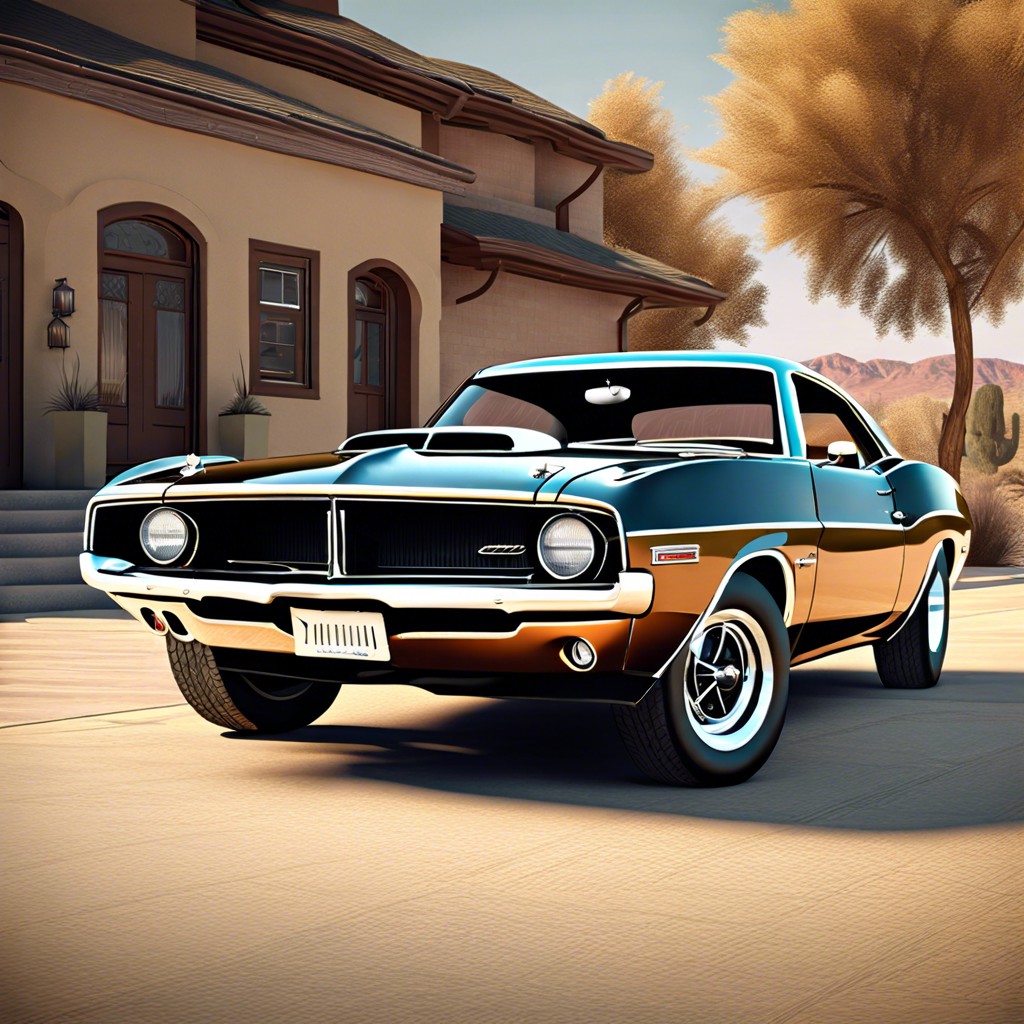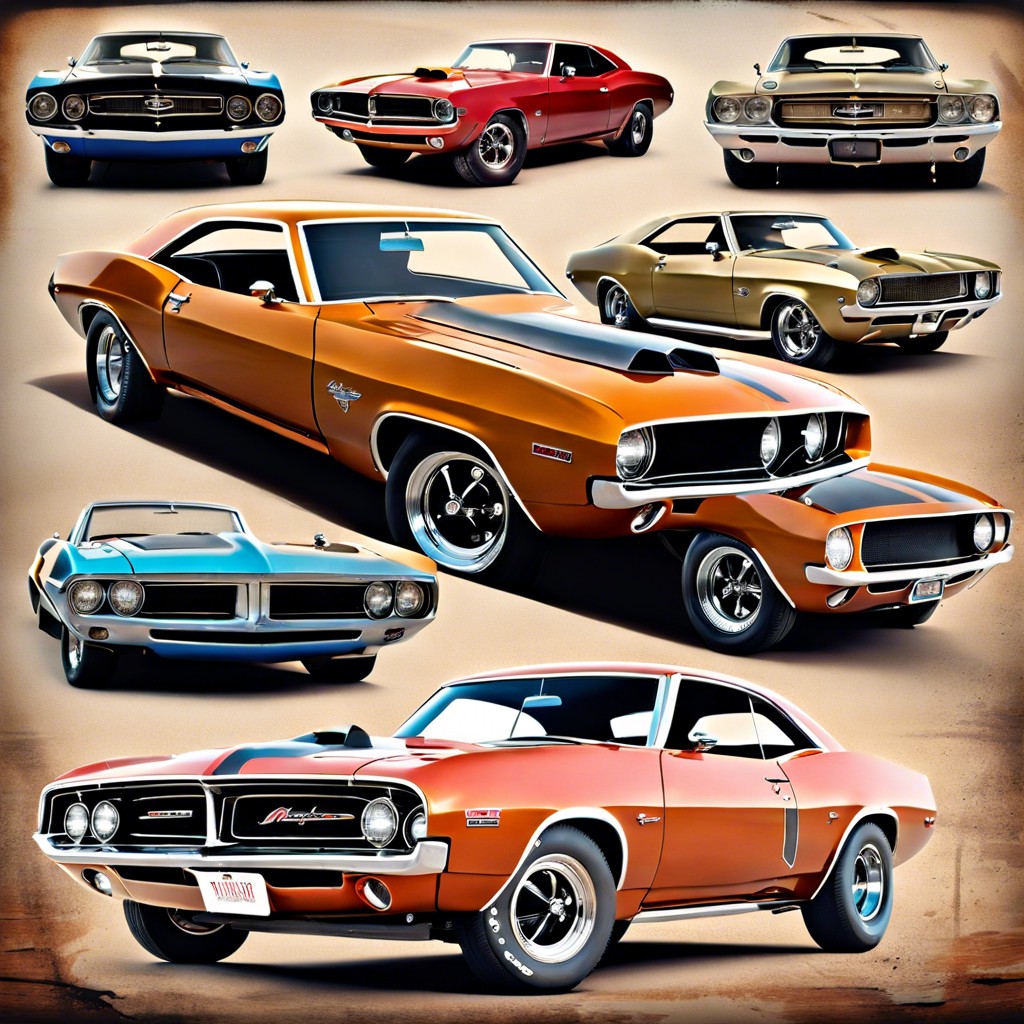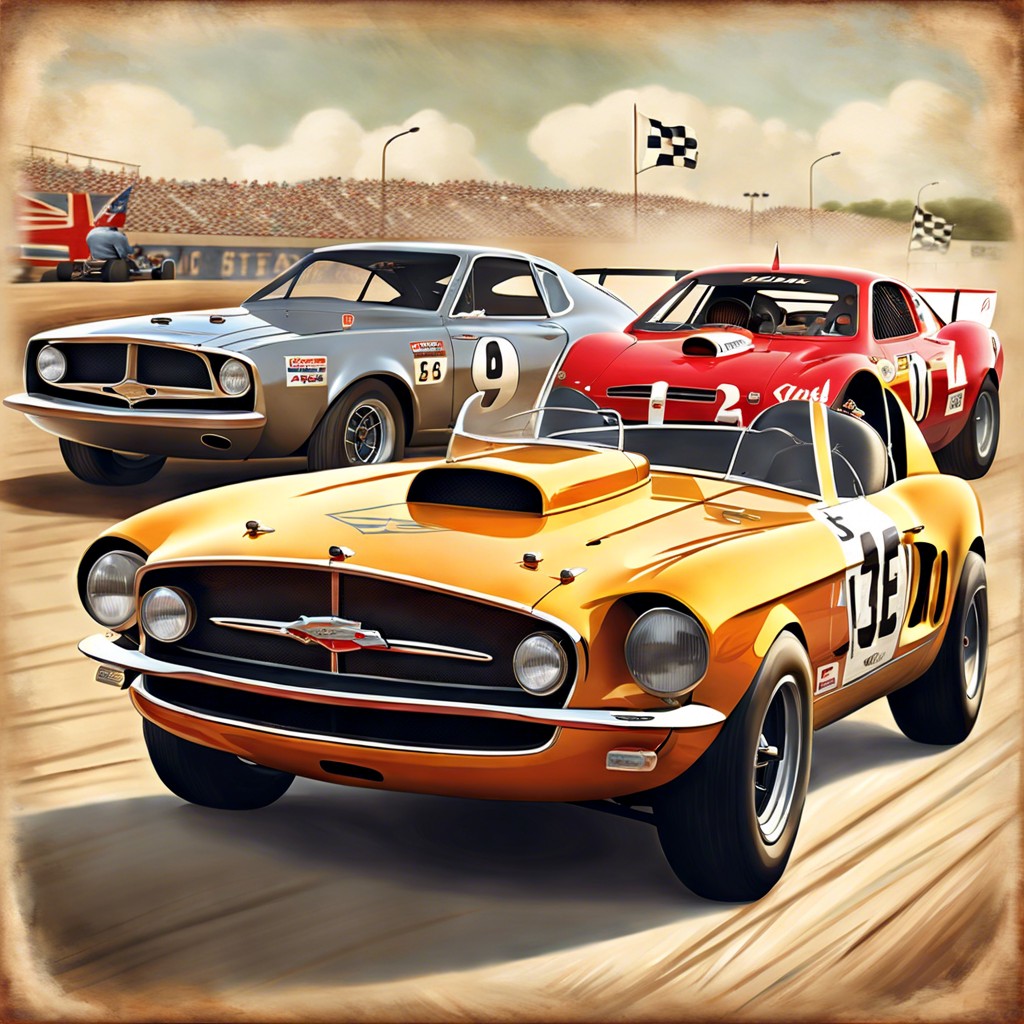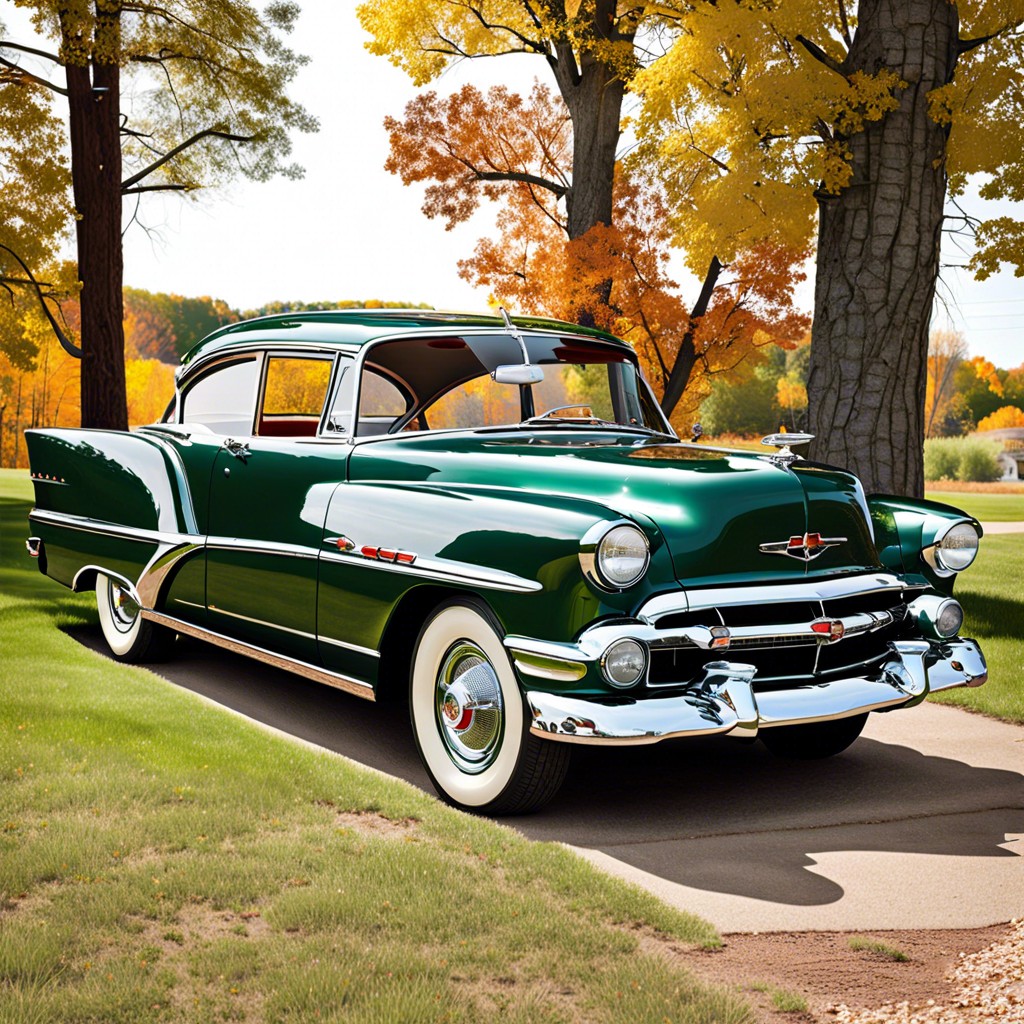Last updated on
This article examines the timeless appeal and characteristics of vintage muscle cars, providing insights into their enduring popularity and distinctive features.
Key takeaways:
- Vintage muscle cars are American high-performance automobiles with powerful V8 engines.
- Classic muscle cars were popular from the late 1940s to early 1970s.
- Iconic models include the Pontiac GTO, Ford Mustang Mach 1, and Chevrolet Chevelle SS 454.
- Investing in vintage muscle cars can be profitable but requires research and maintenance.
- Muscle cars have become symbols of power and freedom in American pop culture.
Definition of Vintage Muscle Cars

Vintage muscle cars are high-performance automobiles, chiefly American-made, that boast powerful V8 engines and exude a sense of raw power combined with a classic aesthetic. Produced primarily between the 1960s and the early 1970s, these vehicles were built for speed, featuring lightweight bodies relative to the size of the engine.
These cars often possess a rear-wheel-drive layout, facilitating their characteristic straight-line speed, which was a selling point for a market eager for fast and affordable cars. The term “vintage” typically applies to muscle cars that retain authenticity with minimal modifications, preserving their original form and capabilities.
Muscle cars gained a formidable reputation on the drag racing scene due to their quick acceleration and high top speeds. These vehicles remain a symbol of automotive innovation during a period that revolutionized the concept of personal power and performance in the American automobile industry.
Era of Origin for Classic Muscle Cars

The classic muscle car period spans the late 1940s through the early 1970s, reaching its peak between 1965 and 1970. These were high-performance American cars with powerful engines designed for maximum acceleration. They emerged from a post-war era when consumers began demanding speed and power, and manufacturers responded with big block engines in mid-size chassis.
In the 1950s, advancements in engineering and technology led to increased horsepower. It was the 1964 Pontiac GTO’s introduction that marked the beginning of the true muscle car age, leading to a surge in competition among American automakers. The era was characterized by a race to produce the fastest vehicles, culminating in a variety of makes and models that enthusiasts celebrate today.
The oil crisis of the 1970s, along with environmental concerns and insurance companies hiking rates for high-performance cars, signaled an end to the original muscle car era. However, the legacy of this period has endured, influencing automotive design and culture for decades to follow.
Iconic Vintage Muscle Car Models

Certain models stand out as archetypal powerhouses, ingrained in automotive history. The 1966 Pontiac GTO is often credited with starting the muscle car craze, its potent V8 engine representing the quintessential muscle car ethos. The 1969 Ford Mustang Mach 1 showcased another level of power and performance, forever associated with the image of American speed and sportiness.
Chevrolet’s 1970 Chevelle SS 454 delivered brute force and a menacing look, making it one of the era’s most sought-after muscle cars. With its Hemi engine, the 1970 Plymouth Barracuda became synonymous with high performance, embodying the peak of muscle car design and capabilities.
Dodge Charger, particularly the 1968 and 1970 models, combined aggressive styling with large displacement engines, creating legends in both street and racing environments. Meanwhile, the AMC AMX, a lesser-known but formidable competitor, emphasized small size and lightweight coupled with a powerful V8, challenging the norms of muscle car production.
Each of these emblematic vehicles showcases the muscle car’s core appeal: raw power, thrilling performance, and an iconic status within the automotive sphere.
Investment Potential of Vintage Muscle Cars

Muscle cars have seen a steady appreciation in value, particularly pristine or rare models. Speculation in the classic car market can yield high returns, but comes with risks akin to any investment. Rarity, originality, and historical significance elevate a car’s value. Restoration quality also impacts investment viability; vehicles with matching numbers, original parts, and documented histories command premium prices. Market trends fluctuate, so potential investors should research and monitor pricing shifts within automotive communities and auction results. Additionally, maintenance costs should be considered, as they can impact overall investment return. Investing in muscle cars combines passion with potential financial reward, but knowledge and due diligence are essential to making an informed investment.
The Role of Muscle Cars in American Pop Culture

Muscle cars transcend their role as mere transportation. They have become emblematic of an era marked by rebellion and a thirst for power and speed. Their burly engines and distinctive designs are ingrained in the fabric of American society, becoming synonymous with freedom and youthfulness.
Films, from “Bullitt” to “The Fast and the Furious,” immortalize these vehicles, paralleling the ideals of the characters with the persona of the cars themselves. The growling engines and fast-paced chases encapsulate the essence of the American dream: achieving the impossible and pushing beyond limits.
Music further cements their legacy, with artists like The Beach Boys and Bruce Springsteen infusing their lyrics with references to the power and excitement that muscle cars represent. References to “Chevy Chevelle” or “little deuce coupe” in songs create an auditory link to the visual iconography of the muscle car.
Collectibles and memorabilia, including scale models, artwork, and clothing, reflect the cultural imprint of muscle cars, allowing enthusiasts to showcase their passion and retain a piece of history.
Finally, car shows and drag racing events celebrate these vehicles’ performance heritage. They offer a communal space for fans to gather and share their appreciation for the engineering marvels and aesthetic beauty that these cars represent.




